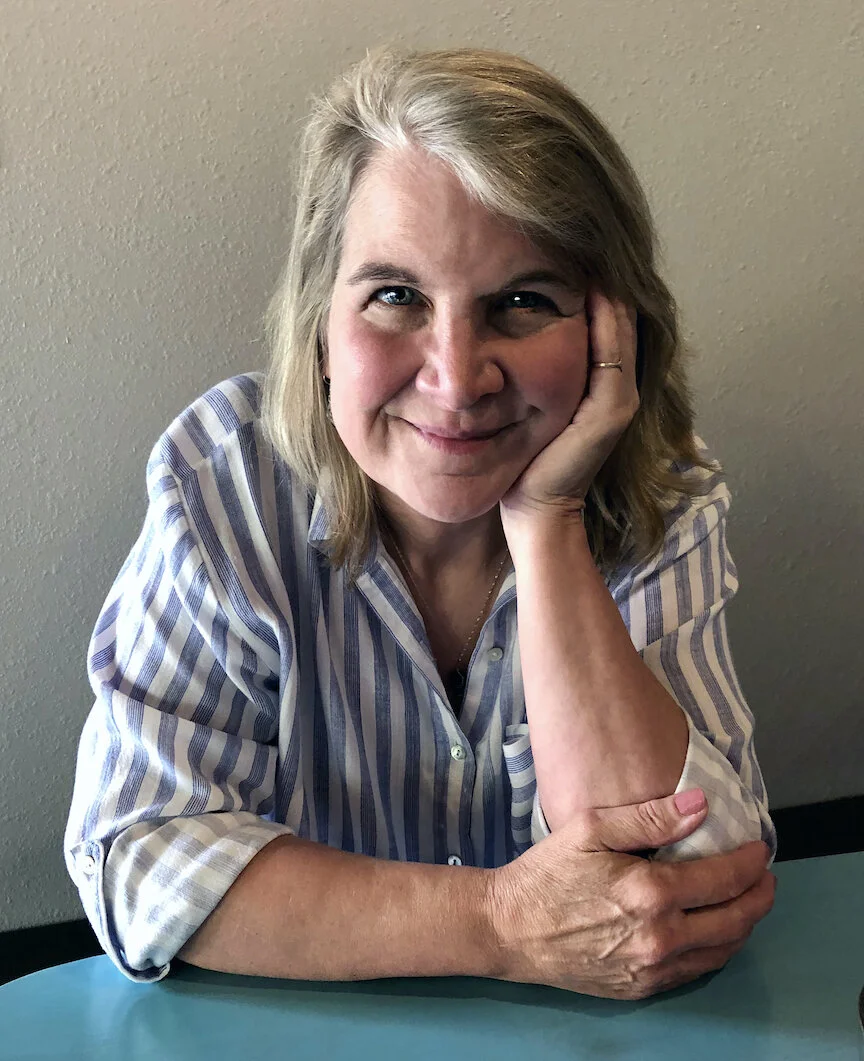Interview with artist Cynthia Kresse
Cynthia Kresse grew up in Little Rock, Arkansas and now lives in Eureka Springs, Arkansas. Her paintings and sculptures are influenced by her training in medical illustration and nursing, not just from the technical side but perhaps also from more poignant moments with her patients. Her pastels are filled with mystery and the emotions conjured by light and shadow. Cynthia does not want the viewer to fear the dark. Rather, she wants us to explore it with her. Her works are exhibited widely and have earned many awards. She is represented by Boswell-Mourot Fine Art in Little Rock and her full portfolio can be found at her website cynthiakresse.com.

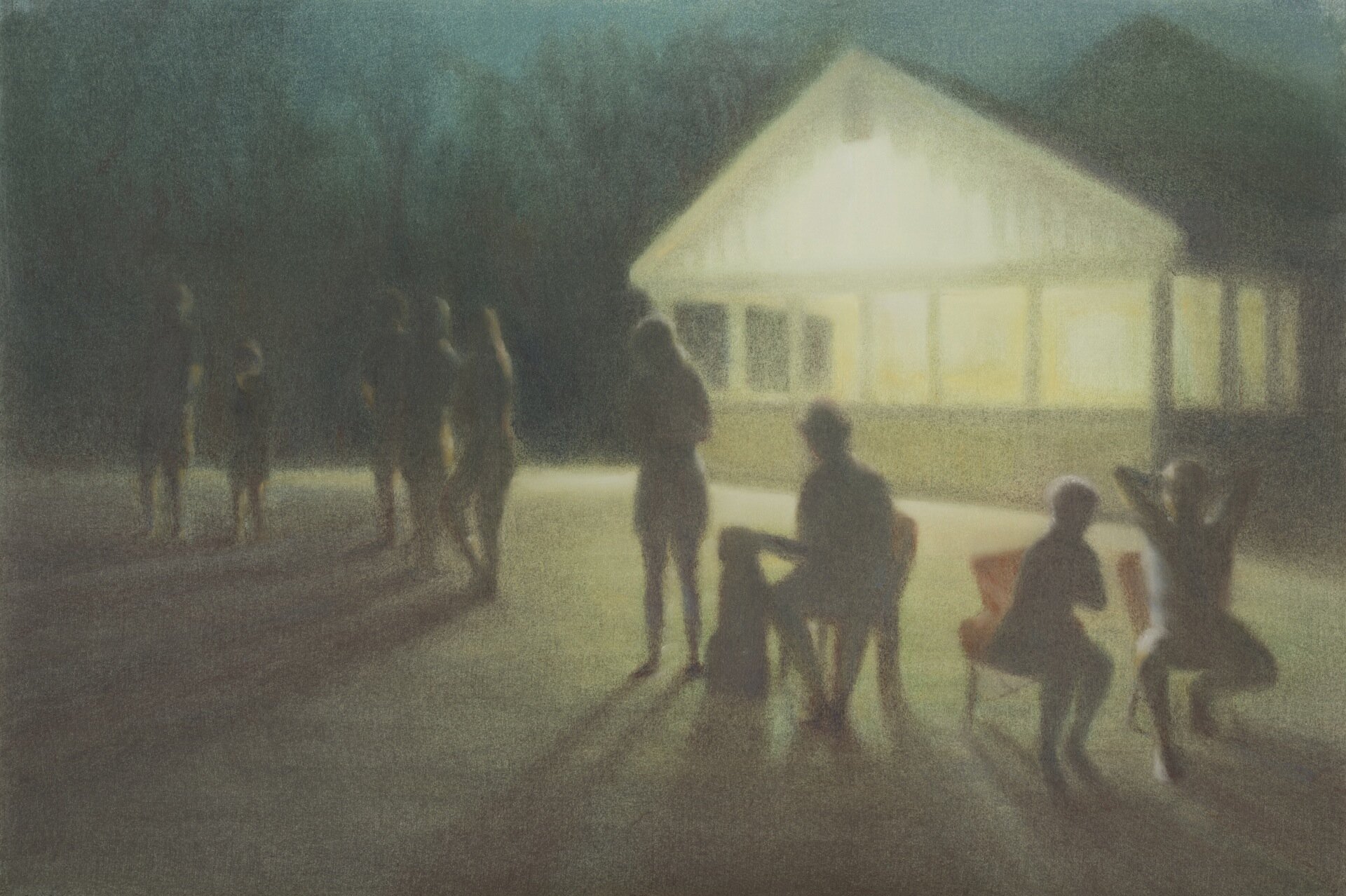
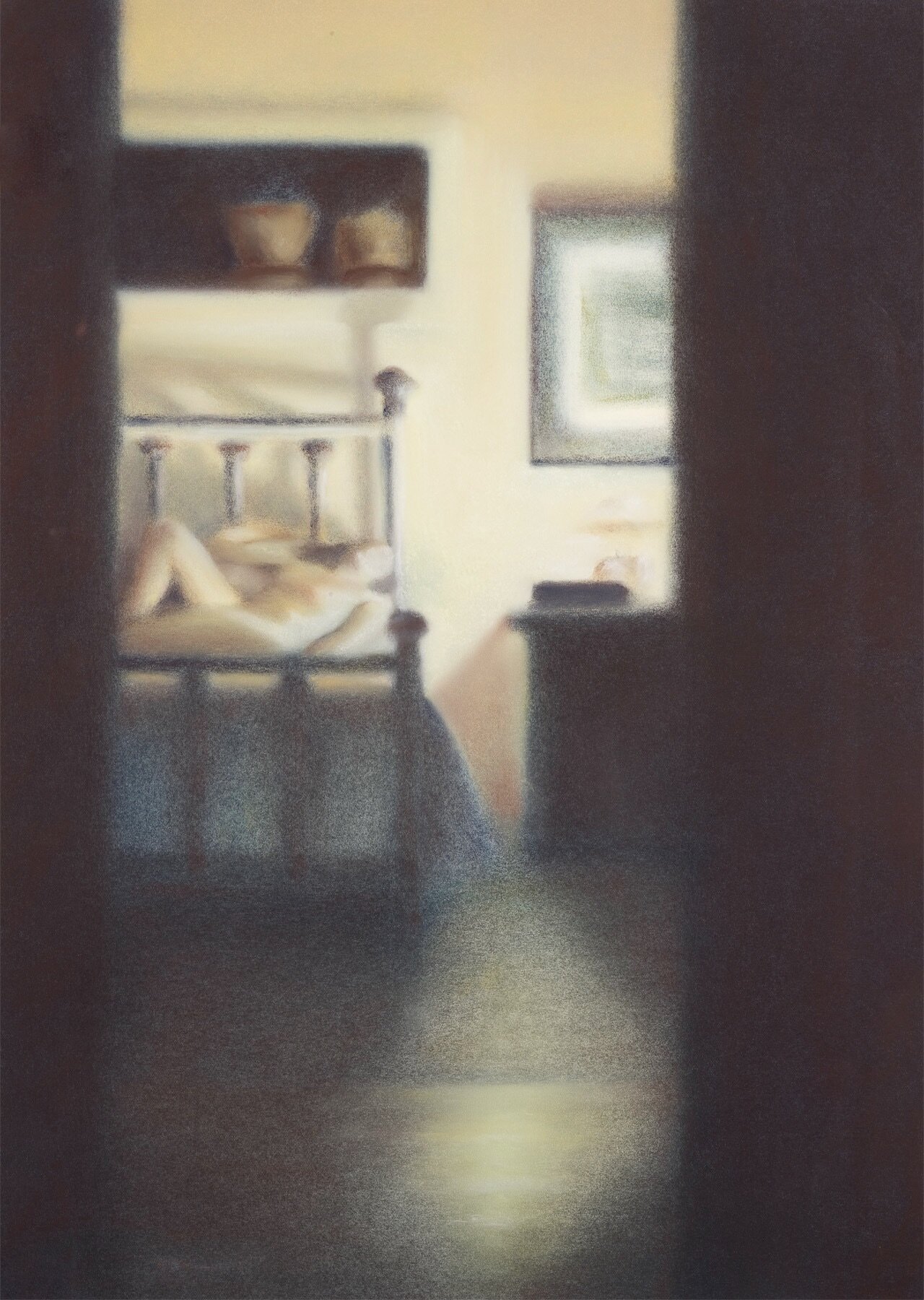
AAS: Cynthia, would you talk about your background? Where did you grow up?
CK: We were a large Catholic family of eleven children growing up in North Little Rock, where my mother still lives in the home we’ve known for 55 years. Growing up in a large family was a lot a fun. There was always someone to play with, always someone to talk to, and a positive energy humming in the house. With that many brothers and sisters, patterns were in place by the time I came along as a middle child. Older siblings were doing exciting things, getting awards in school, traveling, bringing interesting friends home. It made it all feel so wide open, like that world was full of potential and waiting for me. Babies were still coming behind me, so at the same time I knew how to hold a baby, change a diaper, and talk to a toddler.
I was tuned in to the pulse of creativity that was always going on throughout the house. All around me I noticed how imaginatively my parents and siblings were repurposing things, and making things work. My mother sewed everything we wore for many, many years. We were taken to the fabric store to pick out our fabrics, and then to the pattern books to find our outfit. I would visit with her as she sewed, I loved how beautifully her hands worked, waiting for when she presto, snipped the last thread from the machine and pulled out my finished dress.
My imagination was fired by reading and music. Books were everywhere with so many brothers and sisters. My father loved literature, he could recite long stanzas of Shakespeare and Latin. I was always taken by the visuals in those encyclopedias and books. I was inspired by the Life magazine, the gorgeous black and white images. It was the black and white illustrations in C.S. Lewis's Chronicles of Narnia and Aldo Leopold's A Sand County Almanac drawings that I first attempted to replicate, when my sister showed me how to use pen and ink. And all kinds of music always playing. Another brother taught himself guitar and played it around the house, which was so impressive.
In first grade I met my first true artist. I will never forget when Polly Loibner came to our elementary school and taught finger painting for a day. The nun corrected me and said I made the sun was too big. When Polly came back around and asked why I changed my sun, I told her that Sister said it was too big, Polly said I can paint it any size I want. Art trumped nun, what!?
“I had found something really special to me, deep inside it was something I recognized. Drawing and pen and ink, it felt exhilarating.”
I was in the seventh grade when my sister Christy showed me how to draw, and my mind was blown as she taught me negative space, proportions and shadowing. She let me play with her pen and ink and use her art supplies. I had found something really special to me, deep inside it was something I recognized. Drawing and pen and ink, it felt exhilarating.
I wouldn't let anyone know at that point how important it all was to me. I took art classes for two years in high school and that is where I learned I could draw portraits. My art teacher was kind and supportive, she pointed out that what I drew from life was better than what I was drew from photos. But I didn't have the courage to talk to her about it as a career. It did not seem practical to major in art for a college degree.
Later, when I started looking at art seriously, my brother Kevin who already was a working artist, was a source of encouragement. And during the inevitable times of doubt or frustration in art, he has been and remains my honest sounding board.
“Things are going on outside our vision. We tend to encapsulate our world, but our artificial lights only go so far and then there is an edge of darkness.”
Front Porch and Chair, 18” x 25”, pastel on paper
AAS: You have an interesting education background - medical illustration and nursing. What pointed you in that direction?
CK: Well, I always loved science and biology, and decided after reading the story of Clara Barton in grade school that I wanted to be a nurse. I started college majoring in biology, I didn't visualize a career in art at that point. Then I went to the University of Arkansas for Medical Sciences (UAMS) for a degree as a Nurse Practitioner.
Once I graduated and was working, I had the time to take art classes. I had moved to Charlottesville, Virginia and I worked a schedule at the University of Virginia Hospital that let me seriously take art classes on campus. I had great instructors as I took life drawing, photography, design, and painting.
Then, to my good fortune, the University of Arkansas at Little Rock (UALR) accepted me as a provisional grad student, and it was exactly what I needed. A fabulous boot camp in “get serious about art”. Eric Mantle, Floyd Martin, AJ Smith, Jack Harrington and Kathy Holder focused me, and inspired me. I previously only felt comfortable in black and white media, like charcoal pencil drawings and pen and ink. There, I was challenged to get into color media, oil paints and pastels.
The following year I was accepted into the Masters program in Medical Illustration at the University of Texas Southwestern Medical Center. It was two years of illustration techniques, combined with an anatomy and dissection class with the med students, graded as med students. The hardest I have ever worked. When I graduated I tried to freelance in Arkansas as a Medical Illustrator. I was a terrible business person, and though I loved doing a project for a client, I learned repeatedly I don't have the proper internal skills to run that kind of business. After five years of trying, I made a decision to drop my illustration business. I returned to being a Nurse Practitioner part time, and as much a full time artist as possible, doing art just for myself.
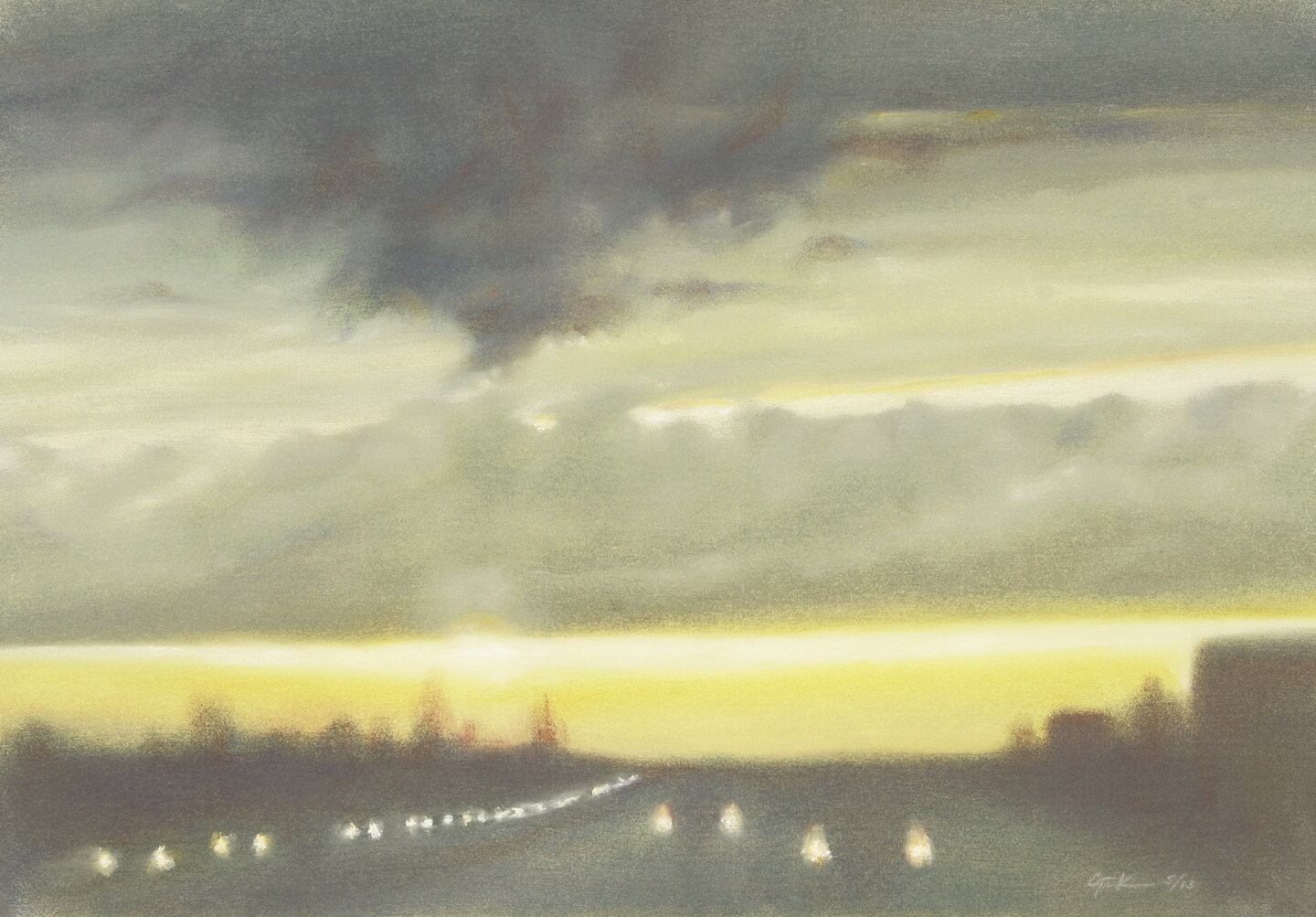
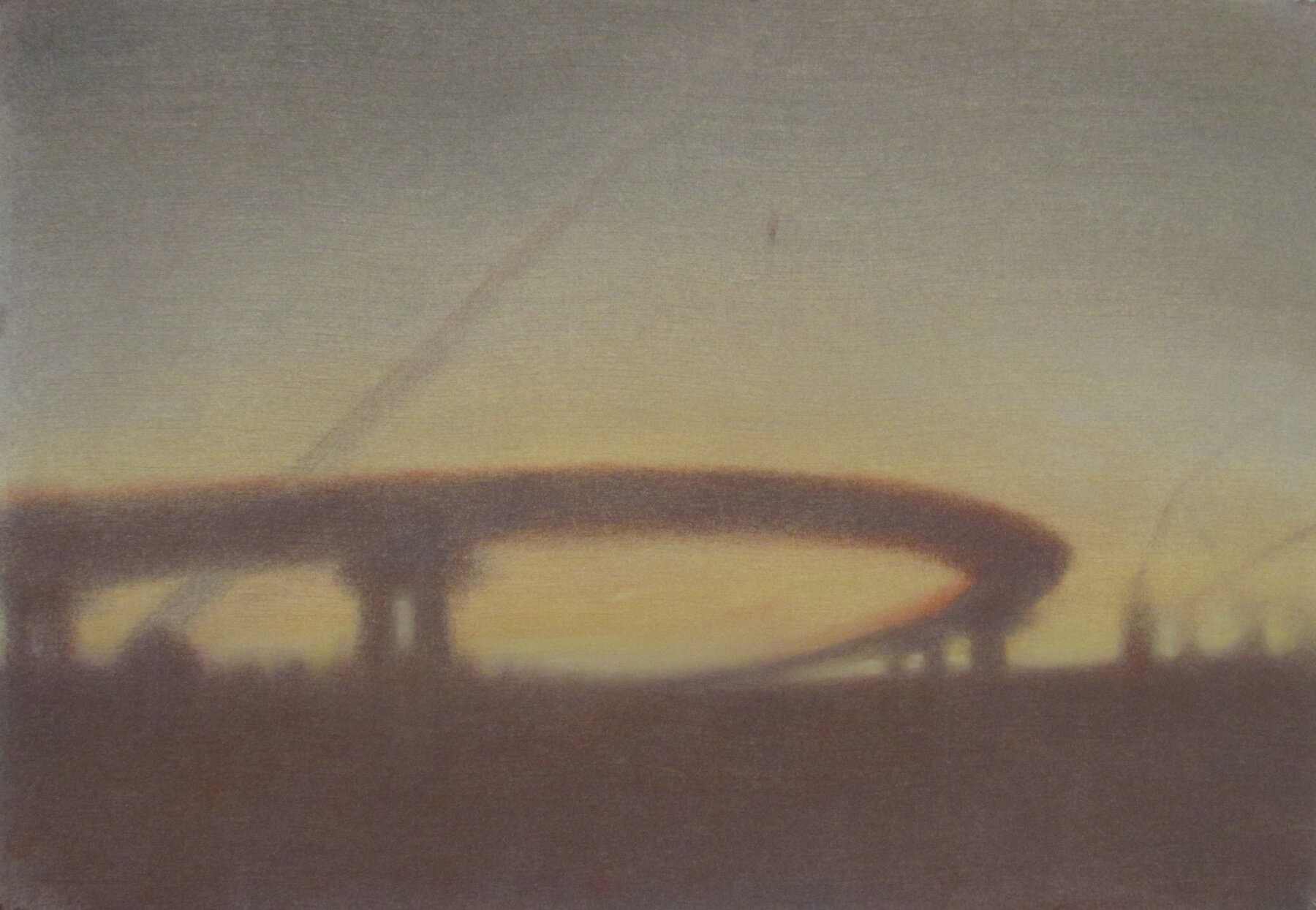
AAS: You’ve said you are fascinated by the ‘barely seen and the almost there’. Is that something that has changed over the years or have you always felt that way and wanted to capture it on paper?
CK: I think I have always felt that way. The “barely seen and the almost there” is sometimes about literally not seeing it all. Part of the image is being obscured in shadow. This is where I will use strong chiaroscuro to create dark shadows to hide areas and highlight ordinary parts of objects or scenes, to make them look extraordinary. I love to show the way our natural and artificial light sources can spotlight and create such interesting features and shadows.
Hwy 65 Botkinburg, Wintry Afternoon, 19” x 25”, pastel on paper
“Barely seen and almost there” is also about trying to provoke a feeling or a memory that you, the viewer, must provide. I have never had a desire for my art to give the viewer a narrative. I just pick the common things around us as subject matter: what people see often, drive past, don't view with attention. Headlights on a road at night. Trees on a winter afternoon. If I can create it with the depth of feeling that moved me to draw it, then maybe it translates a feeling to the viewer. And, then maybe the viewer has to reach, in order to provide what that feeling is to them.
AAS: Would you talk about your approach to creating your captivating and – what I would call mysterious or even moody – works? Is there something about working in pastel that makes that possible? How important is technique?
“The rubbing is such a tactile, and mesmerizing, way to work. I really get lost in it.”
CK: Yes, thank you for saying captivating, I really appreciate that. I have found my voice through my technique. I stumbled across it when I experimented with coloring my own paper instead of using already colored sheets. As I layered colors on the paper, they were blending, then the pastels just started interacting, even vibrating, in interesting ways. I kept building and produced my first hand rubbed pastel piece, a portrait “The Hermit” for the Tarot Major Arcana exhibit at UALR.
Now I can't do sharp edges all that well with fingers, but that spoke to me. I stand close and apply pastel, then back up and see how it reads. I hope to see the colors and contrasts are working well far away, and the pastel work is interesting close up. It is a lot of time. And it is a lot of rubbing, because I don't draw anything underneath. I build and build layers until it does something I was reaching for, and I don't know I am there until it happens. Then I can feel it pop together. The rubbing is such a tactile, and mesmerizing, way to work. I really get lost in it.
“With light there is shadow, we embrace them both because we have them both, and they both have character and color.”
AAS: Most of your works are night scenes lit by moonlight or some other unseen source. What fascinates you about the night and subdued lighting?
CK: When I moved from the city to the country, it really was profound how beautiful it was, day and night. The chiaroscuro, the way darkness and light interacted without streetlights, the amount of color in nature in both light and darkness. I wanted to find ways to express that. I see how, in darkness, the light from my window turns the lit edge of a outdoor chair into an orange abstract shape. I see the glow from a house only hit the tops of a bush like a lighthouse finding a boat's mast. It is selective to the point of abstraction, but your eyes fill it in, and you know the object is just a chair, the bush just a bush. So I play with that, and emphasize what the light found and let the dark have the rest.
I also work hard in my pastels to choose colors wisely. My darks are composed of colors, not black or dark grey. Just like the attention I pay to the light, I give that color attention to the dark. I really want the palettes to be different and interesting, and the darkness and light to be in a color conversation with each other.
When I did my series of cell phone portraits, I had people use the phone to light their face in darkness. It was such an interesting way to change up the usual portrait. The cell phone light was soft and didn't cause squinting, the strong chiaroscuro was fun. Then I made the composition an extreme close up. I loved that challenge, to choose the palette to give them their personality, produce a heightened mood, and still keep that color attention throughout the contrast.
Kresse at Full Moon, Easter, 25” x 37”, pastel on paper
AAS: You have had works accepted to the Delta Exhibition many times. In 2018 Kresse at Full Moon Easter was accepted into the Delta. Would you talk about that piece and the incredible mood you were able to create?
Sarah at Full Moon Christmas, 37” x 25”, pastel on paper
CK: Thank you. Kresse at Full Moon, Easter is the first of a series, which hasn't been taken too far yet. Sarah at Full moon Christmas is another from the series. It has all the elements which my work is about. The contrast of natural light, the moon, versus an artificial light source, the car headlights. It has the obscuring shadows, strong focused light source, and subject matter that is ordinary but lit to be extraordinary.
My brave niece Kresse strode around in the yard amongst the tree line, while I moved my car around. At one point she stopped to look at me. I asked her to freeze, while my car headlights hit her and some of the surrounding trees. Sarah at Full Moon Christmas was the same process but my niece Sarah strode toward me on my gravel road. There is no narrative with either of these, just the light finding a figure.
This series follows naturally behind my “Views From the Car” series, especially Hwy 62, Eureka Springs, Leatherwood at Dusk (see later) where every scene was from a drive I often take between Little Rock and Eureka Springs. It is inspired by my experience of driving on country roads at night. I will see a piece of a boulder lit by my headlights. Was that a cat? Then I see a mailbox but the post is in shadow. I drive past as a deer disappears in the woods, or a fox races down the road. It is intriguing – country darkness – Elvis Costello sang it.
Things are going on outside our vision. We tend to encapsulate our world, but our artificial lights only go so far and then there is an edge of darkness. I don't think of that as a fearful thing. I just think there is delusion that we are in control with lights and gates, and beyond that boundary is separate from us. With light there is shadow, we embrace them both because we have them both, and they both have character and color. They interrelate and the moon reliably shows up full every month.
Chicken House and the Rutted Gravel Road, 25” x 23”, pastel on paper
AAS: Fenceline and Chicken House was accepted into this year’s Delta. It is one of a series with a similar theme. Would you talk about that series and I guess my favorite, Chicken House and the Rutted Gravel Road?
CK: This is from a series of large pastels called “Chicken Houses of Northwest Arkansas”, featuring lit chicken houses in nighttime landscapes. Chicken houses are a quintessential northwest Arkansas feature. Like the midwestern silos, they mark hard-working farms. During the day, these chicken houses are gray and drab. They are long, low metal buildings that stretch out across the farmland. The sides are open, made of chicken wire curtained by translucent tarps. They boast signage from Tyson, George's and Butterball.
Nightly, when the buildings are lit, they become these glowing rectangles of light that cut across the hills. It is so out of context, to come upon one in the dark Ozark night. These angular slashes of light look like alien ships have landed in the countryside. In my pastels, I emphasize this visual surrealness. I juxtapose the geometric light against a pastoral landscape. In the foreground and background, typical implements and features of a working farm show up, but somehow don't make sense. My compositions point out that extraordinaries become ordinary in our surroundings. It is a nod to our regionalism. And, I work through my inner dilemma, which is, at night I find them beautiful.
My career as a Nurse Practitioner informs this series. I saw that work for farm families is hard and relentless. These houses require farmers to cycle chickens at a breakneck pace. Their hands, skin and lungs are assaulted in the care of the chicken houses. Covid has exposed what I saw was the difficult and automated life of the worker in a chicken processing plant, and their thin protection from disease or injury. Which brings me to the inhumane life of the chicken raised in these enclosed houses, unable to walk because they have never been given the space to use their legs. My heart cries out for the unnatural way the chickens have to live and die, and feels for the chicken house owners and plant workers. There is a better and more humane way of doing all of this.
In Fence Line and Chicken House (see below) as I drive these curvy Ozark roads I know so well, I often spot these chicken houses in the distance. With the full moon in the sky, and the glow of my headlights in the foreground, this chicken house is the middle act in the night lighting drama. This pastel is from my series “Chicken Houses of Northwest Arkansas”.
With Chicken House and the Rutted Gravel Road I feature a gravel road in the foreground. It is in rough condition and I let the viewer decide if that is significant. If they are curious, they may be wondering why. Is it normal wear and tear from a working farm? Has it just rained and that is normal erosion? Is it from the continuous flatbed trucks that come and carry out crates of chickens? Are the chicken house owners making enough money to sustain their farm and roads? Beyond the chicken house are the mountains, so it sits in a pastoral backdrop of trees and darkness.

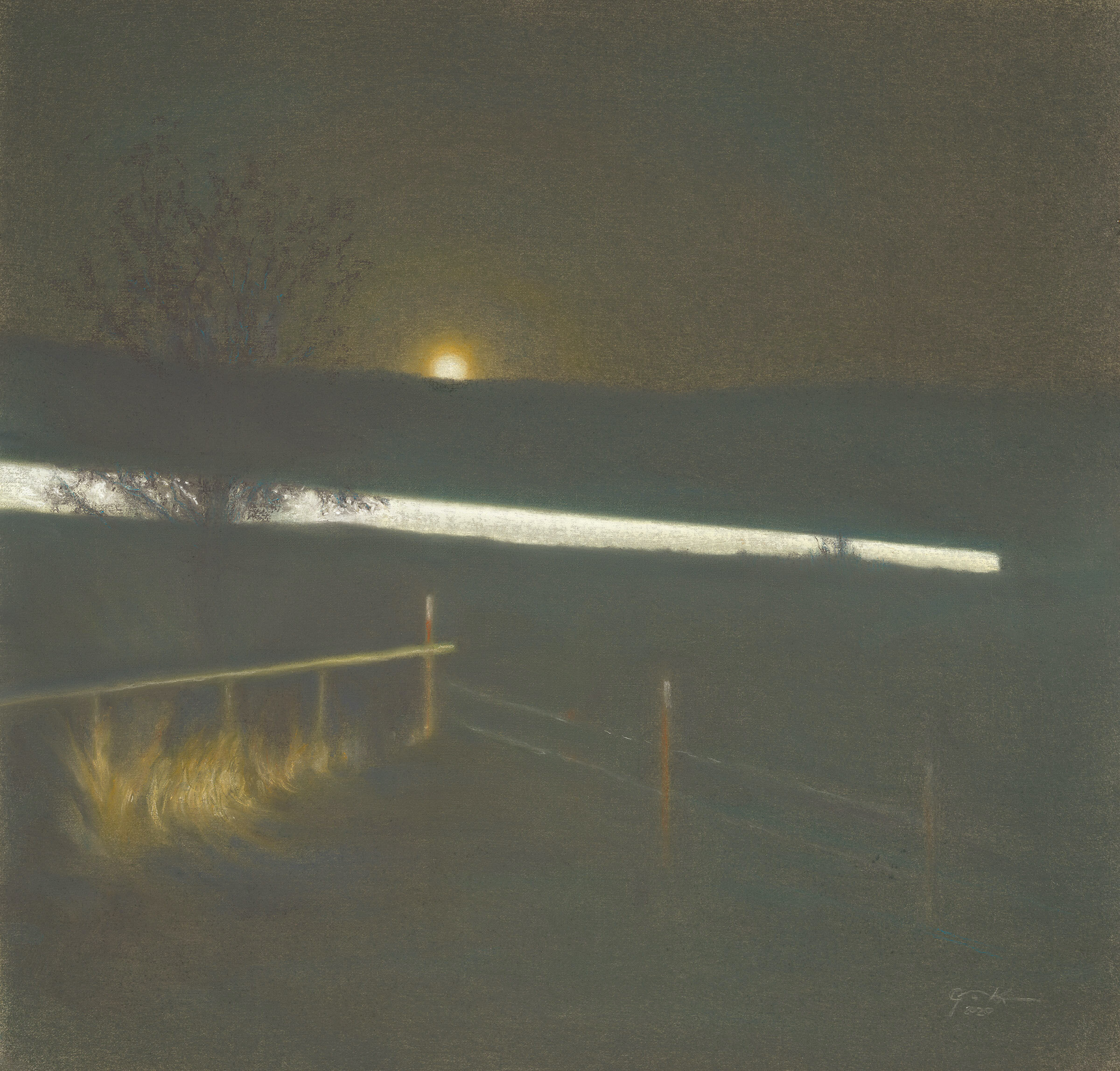
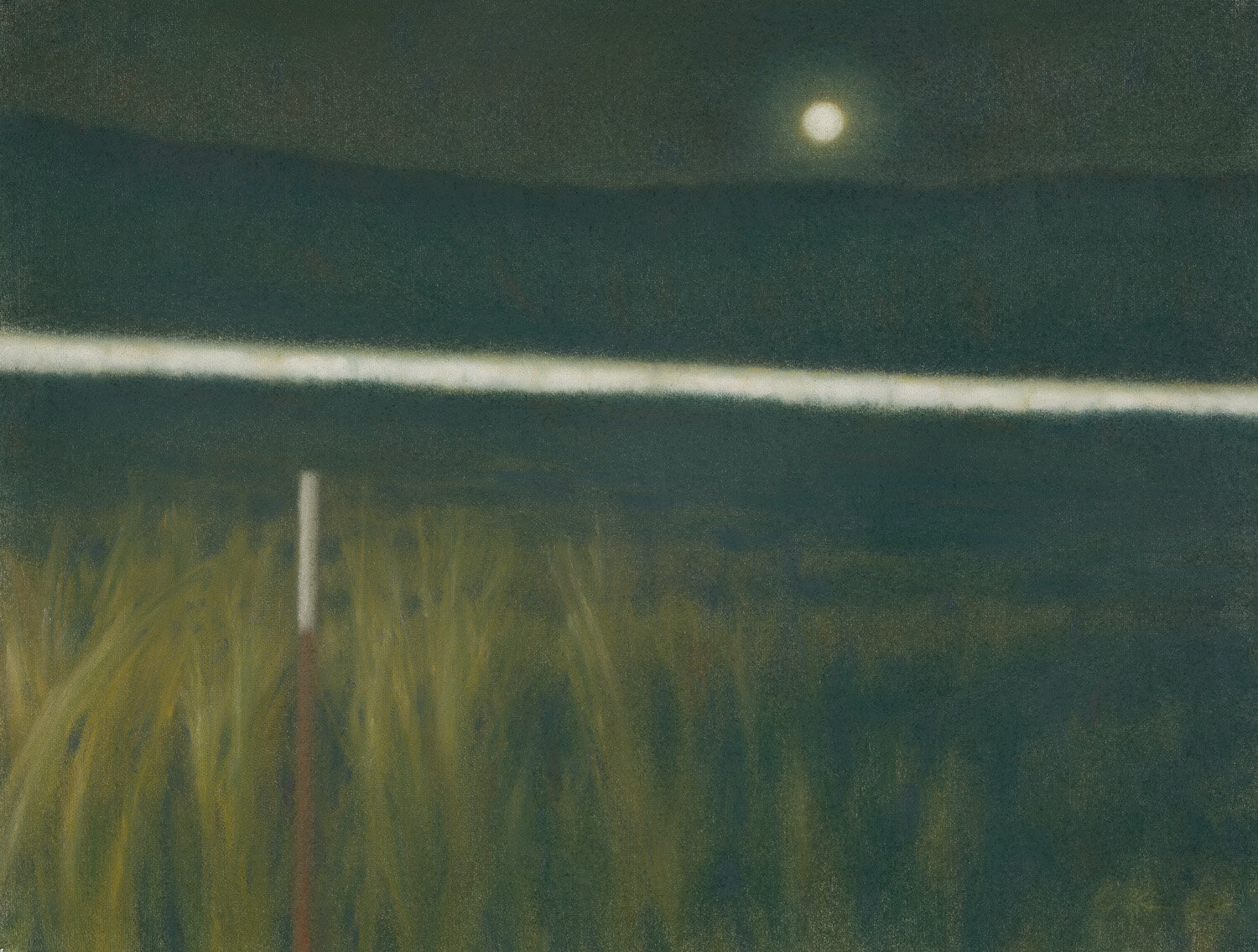
AAS: We typically go to Eureka Springs twice a year but have not at all in 2020. What is the art scene like in Eureka Springs right now after Covid-19 has severely reduced tourism?
CK: Ah, Eureka Springs, what a nice topic in this beautiful fall weather. Well, I do know that sadly the Eureka Fine Art Gallery has closed. It was a cooperative of artists who shared the duties of running the gallery and used it as their art venue. The various other galleries are just trying to work around the constrictions of Covid like other small businesses . When there is no Covid, the artists aren't just in their galleries. You will find always artists represented in the many themed parades that march down Spring Street. There is May Fine Arts month with daily activities all over town. Artists perform in Basin Park, and there are drumming circles every Sunday. I will say when I was downtown last week, it was packed. Autumn this year I heard, has been busier than last year. Unfortunately, that doesn't always mean more art sales.
My studio is located in my home, I carved an area out that is separate from the rest of the house. My house sits in a lovely place in the country, near the White River west of Eureka Springs. All the usual characters come by regularly, deer, turkey and overhead, geese and ducks. I have bird feeders, and crows to take care of food scraps. I am only about 30 minutes from Crystal Bridges and the Momentary.
Down the way from me is the Eureka Springs School of the Arts (ESSA), founded by local artists who had a vision of a place for kids and adults to learn all the arts, 2D and 3D. By leaps and bounds it has been expanding, and they employ local artists to teach as well as far flung teachers. Next to that is Inspiration Point Opera in the Ozarks, which, for three months, is filled with college age voice and music majors from across the nation. So it's not just art galleries in Eureka Springs affected by Covid, there was no opera, and no ESSA classes this spring, summer and fall. All of them have been affected.
Bill the Guitarist, 37” x 25”, pastel on paper
AAS: You create some amazing portraits – often very tight in composition. I don’t know who Bill the Guitarist is, but I think I would like to meet him if he is as mysterious as he looks.
CK: Thank you. I really love this large portrait series that I call ”facial landscapes” because I feel they are very loose. That is the nice thing about working large. My hand is doing these long swoops and my fingers are moving pastel here-and-there freely. If you walk up close that action is visible. But stepping back, the composition pulls together.
When I was a student at UALR, I did a charcoal pencil series where I drew a person's face, then I cut a square or rectangular opening in a cover piece of paper. I revealed just a section of the drawing that was the composition I wanted, then I redrew that part in charcoal pencil on a large piece of paper. It was a revelation. There is so much emotion in these little segments of facial expression. I worked large so the mark making and action of drawing was noticeable close up, but it looked tighter as you stepped back. I was glad to revisit the technique all this time later in pastel. I feel it has a “momentary” quality too, being just a portion of a face. To me it produces a more fleeting experience. This portraiture indulges that “almost seen”, to let the audience finish the face and interpret the mood.
Bill, the Guitarist is Bill Frisell, an amazing multi-genre guitarist and composer. I met he and his wife Carole d'Inverno, a painter, at the Vermont Studio Center while there in October 2010. He was composing and Carol was painting, in the same studio building where I was working. About day 3 I was feeling homesick, they invited me to sit with them and drink wine. As a fan, I was a bit awestruck, but they were such warm and kind people. I would be working and hear strains of Bill Frisell's guitar faintly down the hall, it was surreal. Carol made sure they knocked on my door as they passed to go to dinner. I took the source photo of Bill as he stared at a bonfire.
I can't overstate how important that month in Vermont was, it was amazing how the other artist residents responded to my work. The feedback was so positive, that I felt differently about my work, more focused and more serious, when I came back home.
“If I can create it with the depth of feeling that moved me to draw it, then maybe it translates a feeling to the viewer.”
AAS: There is a very active Arkansas Pastel Society (APS) and they sponsor exhibitions and shows every year. Does pastel have a large following of artists?
CK: This was one of those unexpected avenues that open up for me. My friend sent me a link to the APS, on OnlineJuriedShows and there was an upcoming deadline for a nationally juried exhibit being held at the Butler Center. I didn't know about the Arkansas Pastel Society or that every year they sponsor a juried event, which alternates each year between a state members-only show and a national exhibit. I entered, had a work accepted and attended and met all these incredibly nice, talented pastel artists who have made this society current and active. Hwy 62 Eureka Springs, Leatherwood at Dusk (see below) won an Honorable Mention. I was able to talk to Richard McKinley, the judge for that year, and he was very inspiring. It moved me to enter Eva, the Poet (see below) and Bill, the Guitarist in the Degas Pastel Society National Juried Exhibit at the Garden District Gallery in New Orleans and Eva, the Poet won an Honorable Mention there. That also was an incredible show and I met more inspiring pastel artists. Since then, I enter the APS every year, and stay active in my membership. Everyone should see the yearly APS exhibits, they are beautifully presented and carefully curated.
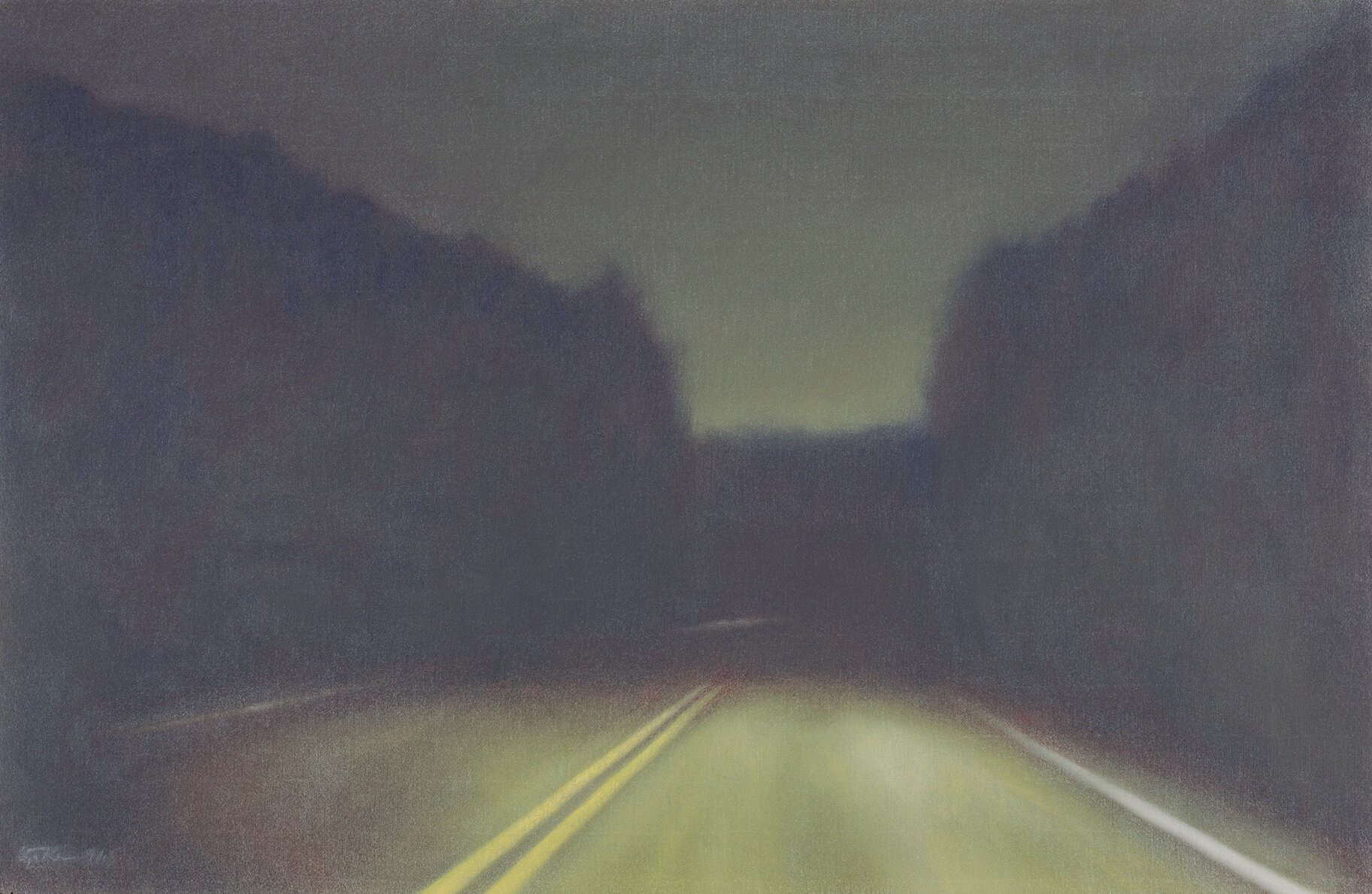
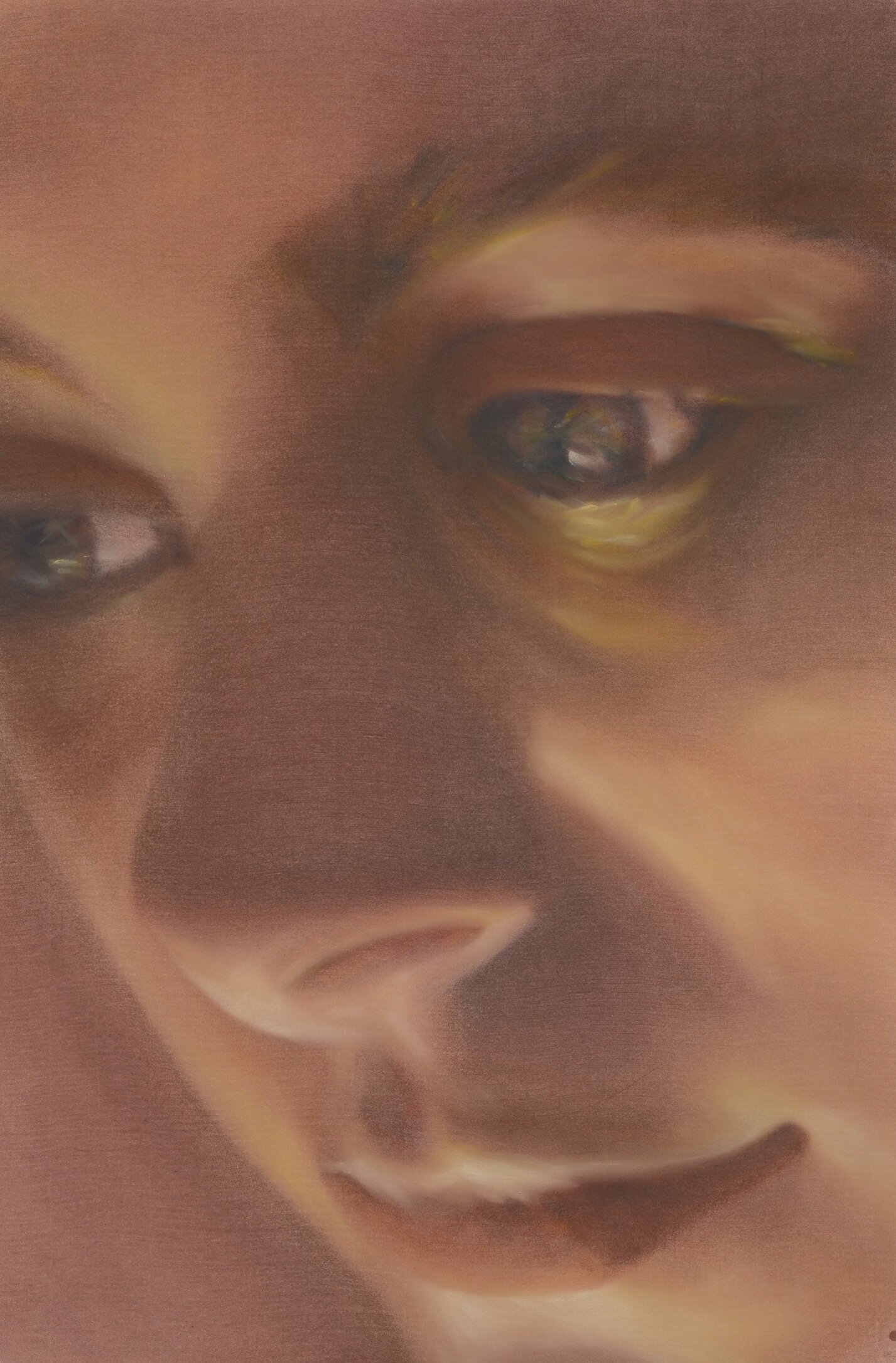
AAS: I have a more practical question. I have always been under the impression that pastels are somewhat fragile. Aside from framing with good quality glass or acrylic, are there any other special considerations for keeping them in heirloom shape?
CK: Ugh, framing. It is important to find the right framer if you work in pastel. I am very fortunate to have Ron Lutz at Studio 62, but he is retiring soon. Two problems for me. First, my work is oversize. This means that conservation mat boards, acid free foam boards and conservation glass has to be special ordered. And, unbeknownst to me, that affects shipping and makes it harder. I found that out when the freight trucks quit coming through Eureka Springs to Studio 62. We are winging it right now but push will come to shove soon.
Second problem: with my work being so large the frame needs to be substantial, or the work can twist and the glass possibly crack so wider frames are better. I lean toward frames that are like pieces of furniture – durable four inch wide wooden frames.
AAS: You have taught drawing at the Arkansas Arts Center and in Eureka Springs. Is that something you have always wanted to do?
CK: Honestly, teaching makes me nervous. My goal is to set up a class that will flex with the students' needs, while teaching them something unique. All the while, making sure it is all about them staying relaxed and having fun with art. Whew.
I know I have things to offer that are from a different perspective, because of my medical and illustration background. And, I always find teaching classes fulfilling, but it doesn't come naturally to me and I will put a lot of pressure on myself. But when I have time, if needed, I will probably go back and teach at the Eureka Springs School of the Arts from time to time.
AAS: I know you continue to see patients. Would you talk about that aspect of your life and how it might influence your art?
CK: It is an interesting time, I have put my position at the clinic on hold to care for my 97 year old mother with dementia. I am considered an “as needed employee” I can work here and there at the clinic as my schedule allows. But mother's dementia won't allow her to be by herself. As a family, we are rowing in the same direction to relieve one another. But I am her primary care giver, and I have worked it out to keep an active studio at her house, and at mine. Sometimes that actually works out, and sometimes it doesn't.
When I was at the clinic as a Nurse Practitioner, I saw what an important community connection it was. I take very seriously the responsibility of care giving, and being there for people who have come to see me. It is very fulfilling. Medicine is creative. There is something unpredictable about every patient visit, so preconceptions never work. So I guess I learned the essential need to be present and listening, then respond to what is there. Maybe it relates to the intuitive way I respond to what I am laying down on the paper as I draw, staying present in the conversation with my art — or maybe not.
